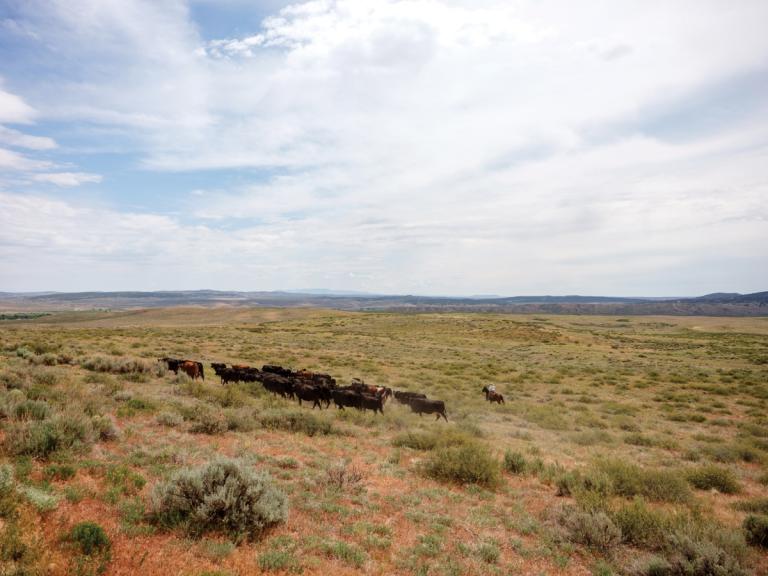This coverage is made possible through a partnership between Grist and Verite News, a nonprofit news organization with a mission to produce in-depth journalism in underserved communities in the New Orleans area.
Despite President Donald Trump’s calls to “drill, baby, drill,” many oil companies operating in the Gulf of Mexico will likely do what they’ve done for years: sit on hundreds of untapped oil leases across millions of acres.
Trump has repeatedly said eliminating barriers to drilling will unlock vast untapped reserves of “liquid gold” and ignite a new era of national prosperity. But most of the drilling leases already granted to companies in the oil-rich Gulf are idle and unused, and they’ll stay that way until the United States’ record-breaking production rates wane and the high costs of drilling offshore drop precipitously.
Of the 2,206 active leases in the Gulf, only a fifth are producing oil, according to records from the Bureau of Ocean Energy Management, which regulates offshore drilling. Oil industry executives and analysts say the current number of 448 oil-producing leases is unlikely to grow significantly, even if Trump makes good on promises to expand leasing opportunities and expedite drilling permits.
The market is saturated with oil, making companies reluctant to spend more money drilling because the added product will likely push prices down, cutting into profits.
“It’s not the regulations that are getting in the way, it’s the economics,” said Hugh Daigle, a professor of petroleum engineering at the University of Texas in Austin. “It’s true that there are a bunch of undeveloped leases in the Gulf, and it’ll stay that way if we continue to see low or stagnant oil prices.”

Global oil production is expected to grow more than demand over the next two years, likely forcing the price of crude to drop 8 percent in 2025 and another 11 percent next year, according to a January forecast from the U.S. Energy Information Administration, or EIA.
The Gulf accounts for 97 percent of all offshore oil and gas production in the U.S. Nearly 12 million acres are under active leases in the Gulf, but only about 2.4 million acres are being used to produce oil and gas, according to BOEM data.
So, what’s the actual benefit of a quicker and easier regulatory process for companies that don’t appear to need more leases?
“It’s simple,” said Brett Hartl, the Center for Biological Diversity’s government affairs director. “The companies make more money when they have to spend less time and effort on permits and environmental regulations and mitigation.”
A host of environmental and worker safety rules enacted after the 2010 Deepwater Horizon oil disaster has made obtaining a lease and drilling permit a multi-year process. Companies must demonstrate their operations are prepared to deal with potential blowouts and worst-case-scenario discharges, and all drilling platform designs and materials must undergo certification by independent engineers.
It’s unclear how the Trump administration will change these and other offshore drilling rules. During Trump’s first term, his administration loosened requirements for offshore well designs, materials, and monitoring technology. Former President Joe Biden reinstated most of these rules.
Oil companies cheered Trump’s recent calls for a more streamlined process and a series of energy-related executive orders he signed this month. The orders declared an “energy emergency,” expanded drilling in the Arctic and repealed Biden’s ban on drilling off the East and West coasts and parts of Alaska.
“Directing regulators to expand access to resources [and] streamline permitting processes … will help deliver a stronger, more prosperous energy future for all Americans,” Mike Sommers, president of the American Petroleum Institute, said in a statement last week. “This is a new day for American energy, and we applaud President Trump for moving swiftly to chart a new path where U.S. oil and natural gas are embraced, not restricted.”
But industry leaders have also been clear that these and other policy changes floated by Trump won’t lead to more drilling. The U.S. is already producing more crude oil than any country, ever, according to the EIA. Last year’s production rate of 13 million barrels per day was a new record high, surpassing the previous record set in 2023.
“I don’t think today that production in the U.S. is constrained,” ExxonMobil CEO Darren Woods told Semafor in November. “So, I don’t know that there’s an opportunity to unleash a lot of production in the near term, because most operators in the U.S. are [already] optimizing their production today.”
In essence, oil is just too cheap to justify more drilling. If prices do go up, companies are likely to tap into Permian Basin shale in Texas and New Mexico rather than seek offshore reserves, which cost more to drill, according to industry analysts.
But that doesn’t mean companies won’t snap up even more offshore leases if they’re offered, Daigle said.
“Some of these (leases) might be drilled in the future, but many are being held just so somebody else doesn’t lease them,” he said. Companies may also stockpile leases to raise funds from investors, or they may simply be playing “mind games” with competitors. Buying up leases in one area of the Gulf can sometimes throw rival drillers off the scent of richer deposits elsewhere, Daigle said.
Leases have been sold too quickly and cheaply in recent decades, according to a 2021 report by the U.S. Department of the Interior, which oversees BOEM. This fast and loose approach “shortchanges taxpayers” and encourages “speculators to purchase leases with the intent of waiting for increases in resource prices, adding assets to their balance sheets, or even reselling leases at profit rather than attempting to produce oil or gas,” the report said.
“More leases may make the companies look good, on paper, to investors,” said Tom Pelton, communications director for the Environmental Integrity Project, an environmental watchdog group. “But they won’t necessarily even produce more oil and gas. And they certainly will not be good for the climate or clean water.”
If Trump really wanted to slash energy prices for U.S. consumers, he wouldn’t have banned offshore wind leasing in federal waters or restarted permitting for new liquefied natural gas (LNG) export terminals, said Scott Eustis, the community science director for Healthy Gulf, a nonprofit environmental group.
Shipping LNG overseas contributes to higher electricity and natural gas prices in the U.S., according to a recent U.S. Department of Energy report.
“LNG exports make everybody’s energy cost more because we’re giving it to China and not using it domestically,” Eustis said.
Beyond the economics, giving companies an easier route to secure leases and permits does little more than put the Gulf at risk of another Deepwater Horizon-scale disaster, Hartl said.
“The only result we’ll have is more risky drilling,” he said. “And then the question is not ‘if’ but ‘when’ we’ll have the next catastrophic spill in the Gulf.”





